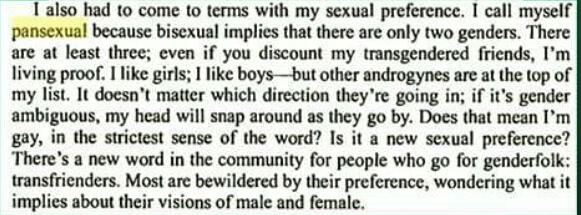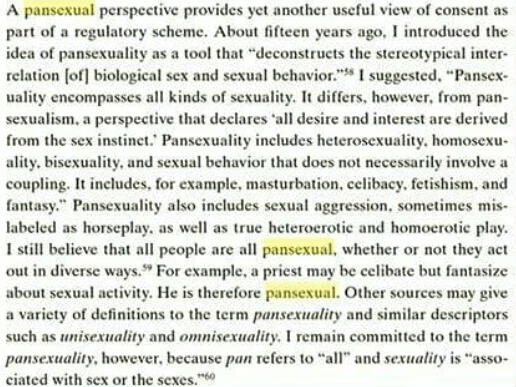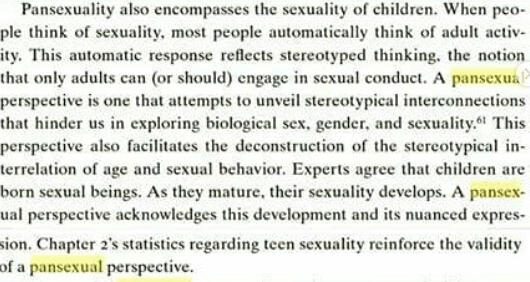Bisexual
&
Pansexual
History

the history of bisexuality
ancient greece
this may surprise you, but bisexuality has existed since the times of ancient greece. some of the most well known heroes in greek myths were bisexual, such as Achilles from Homer's Illiad, and his bisexuality wasn't written as something strange or unusual either, which leads us to believe that this was normal. zeus himself was written as a bisexual, seducing women and having a male lover. however, during those times bisexual meant relations with younger and older men. some other famous historic bisexuals include the Macedonian conqueror Alexander the Great and the Roman emperor Hadrian. i'm sure you have heard of these people before.
ancient japan
once again bisexuality in ancient times meant relations between younger and older men. this was common with samurai, the older mentor and younger apprentice were expected to become lovers (called the shudo) the sexual component would end once the apprentice became of age and found a wife. this also occured with monks.
"In certain eras of ancient Japan, there were believed to be three genders: woman, man, and attractive young man. Adult men weren't expected to be attracted to one another, but sexual relationships with both women and younger men were acceptable. Indeed, the "ideal" situation, a few poems suggest, was to have partners who were both young women (joro) and attractive young boys (wakashu). Bisexuality was viewed as much more acceptable than homosexuality."
native americans
you may be aware of the concept of "two-spirit". this indicates the concept of bisexuality, and two-spirit individuals were seen as leaders and took on male and female roles in society. two-spirit people could have both same-sex and opposite sex relationships, which is known as bisexuality.
1800s
many years later we have the word bisexuality coined by Charles Gilbert Chaddock, meaning attraction sexual attraction to both men and women, from his 1892 translation of the 7th edition of Krafft-Ebing's Psychopatia Sexualis. before this [in the English language] it was used as a term meaning having both male and female parts.
Sigmund Freud
i'm sure everyone has heard of this man already - Sigmun Freud, an Austrian neurologist, the founder of psychoanalysis. however, despite all ethical guidelines he did therapy on his daughter, he had sexual intercourse with his sister-in-law and is said to not be a credible source, despite being called the father of modern psychology.
so how is this relevant?
in 1905 Freud presented his theory of psychosexual development in his work Three Essays on the Theory of Sexuality, where he states that in the pregenital phase children do not distinguish between the sexes and assume both parents have the same genitalia. with this he said that bisexuality is the original sexual
orientation. he claims that "heterosexuality is resultant of repression during the phallic stage" and says that children developed an Oedipus complex where they had sexual fantasies for the parent of the opposite gender and hatred towards the parent of the same gender.
bisexuality was often considered a mental illness, to be treated by castration, medication, hypnosis or electric shock therapy. this only changed in the 1970s.
though rarely, there were openly bisexual poets in the early 1900s: Edna St. Vincent Millay as well as Walt Whitman who is described to be bisexual. the first documented appearance of bisexuality in film was in 1914 in A Florida Enchantment however the word bisexuality was censored.
1960s
LGBT political activism was more popularised in the 1960s. the first public protests for gay and lesbian rights date back to this decade and occured at governmental offices and historical landmarks in the USA, including the White House, Pentagon and the U.S. Civil Service Commission. two of the protesters - Judith "J.D." Kuch and Kris "Gene" Kleeberg identified as bisexual.
1966 brings up a bisexual activist named Robert A. Martin (Donny the Punk). activism on behalf of bisexuals (specifically) also started to grow in 1967 (especially in San Francisco). one of the earliest organisations for bisexuals is the Sexual Freedom League (San Francisco, 1967) in 1969 Magi Rubenstein, a co-founder of three major sex-education institutions in San Francisco and a sex therapist, comes out as bisexual. this is significant as it led to bisexuals being included in the facilitiy's programs for the first time.
Stonewall & the origins of pride
this is the very well known beginning of the modern LGBT rights movement, occuring at the Stonewall bar in 1969. bisexuals were present at this event, standing up to the police during a raid. Brenda Howard is a bisexual activist known for being the "Mother of Pride", as she coordinated the first LGBT pride march. [quotes from Wikipedia] she also came up with the events around annual Pride Day which has developed into what we now know as Pride Month. Other bisexual activists (Donny the Punk) and the gay activist L. Craig Schoonmaker popularised the word "Pride" to describe those events. Tom Limoncelli later stated, "The next time someone asks you why LGBT Pride marches exist or why [LGBT] Pride Month is June tell them 'A bisexual woman named Brenda Howard thought it should be.'
as you can see, there are many prominent bisexual figures in our history, and this identity has been around for very long.
1972
the Committee of Friends on Bisexuality (a Quaker group) issued the "Itacha Statement on Bisexuality" which supported bisexuals and was the first public declaration of the bisexual movement and the first statement on bisexuality issued by an American religious assembly.
1976
Harriet Levi and Maggi Rubenstein founded the San Francisco Bisexual Center, the longest survivng bisexual community center full of bisexual resources (counseling, support services and a newslatter called The Bi Monthly.
1978
a bisexual activist called Dr. Fritz Klein introduced the Klein Sexual Orientation Grid in the book The bisexual option: A concept of one-hundred percent intimacy, examining the nature of bisexuality and attitudes of bisexuals. bisexual activism was spreading more and more throughout the coast.
1984
a bisexual activist David Lourea managed to persuade the San Francisco Department of Public Health to recognize bisexual men in their official AIDS statistics [after 2 years of campaigning]. this led to health departments all over the US to recognise and acknowledge bisexual men. bisexual activists continued to fight for the recognition of women in the AIDS epidemic. in 1985 a HIV-Positive bisexual activist Cynthia Slater organised the first Women's HIV/AIDS information Switchboard. this was important because bisexuals were often blamed for spreading AIDS to their straight partners. an example of this is a 1989 Cosmopolitan magazine article that stereotyped bisexual men as "dishonest spreaders of AIDS".
the Boston Bisexual Women's Network [oldest existing bisexual women's group] was founded in 1983 and began publishing their bi-monthly newsletter called BI Women. in 1983 BiPOL [the first and oldest bisexual poliical organisation] was founded in San Francisco by bisexual activists Autumn Courtney, Lani Ka'ahumanu, Arlene Krantz, David Lourea, Bill Mack, Alan Rockway and Maggi Rubenstein.
1984 BiPOL sponsors the first bisexual rights rally, featuring nine speakers from civil rights groups allied with the bisexual movement. in 1987, the Bay Area Bisexual Network, the oldest and largest bisexual group in the San Francisco Bay Area, was founded by Lani Ka'ahumanu, Ann Justi and Maggi Rubenstein.
1988 Gary North publishes the first national bisexual newsletter Bisexuality: News, Views and Networking
1989 Cliff Arnesen testifies before the U.S. Congress on behalf of bisexual, lesbian and gay veteran's issues.
the artlce "The Bisexual Movement: Are We Visible Yet?" written by Lani Ka'ahumanu appeared in the official Civil Disobedience Handbook for the March, the first article about bisexuals and the bisexual movement published in a national lesbian or gay publication.
June 23rd, 1990: Bisexual Pride Day.
1991
bisexual literature is becoming more prominenet, the Bay Area Bisexual Network starts publishing the USA's first national bisexual quarterly magazine Anything That Moves: Beyond The Myths Of Bisexuality, founded by Karla Rossi, which gave us the well known 1990 Bisexual Manifesto shown below. more literature and details can be found on the linked wikipedia page in the sources section.

"We are tired of being analyzed, defined and represented by people other than ourselves, or worse yet, not considered at all. We are frustrated by the imposed isolation and invisibility that comes from being told or expected to choose either a homosexual or heterosexual identity.
Monosexuality is a heterosexist dictate used to oppress homosexuals and to negate the validity of bisexuality.
Bisexuality is a whole, fluid identity. Do not assume that bisexuality is binary or duogamous in nature: that we have "two" sides or that we must be involved simultaneously with both genders to be fulfilled human beings. In fact, don’t assume that there are only two genders. Do not mistake our fluidity for confusion, irresponsibility, or an inability to commit. Do not equate promiscuity, infidelity, or unsafe sexual behavior with bisexuality. Those are human traits that cross all sexual orientations. Nothing should be assumed about anyone’s sexuality, including your own.
We are angered by those who refuse to accept our existence; our issues; our contributions; our alliances; our voice. It is time for the bisexual voice to be heard. - From the wealth of knowledge that is the Bialogue Tumblr (original attribution: the historic Bay Area Bisexual Network publication Anything That Moves)"
---
The meaning of bisexuality 1970s-1990s
<>
1974
"Kate Millett concluded her December, 1974 talk by lauding ‘the very wealth and humanity of bisexuality itself: for to exclude from one’s love any entire group of human beings because of class, age, or race or religion, or sex, is surely to be poorer - deeply and systematically poorer."
quote from “The Bisexual Movement’s Beginnings in the 70s“, Bisexual Politics, referring to 1974
<>
"J: Are we ever going to be able to define what bisexuality is? S: Never completely. That’s just it – the variety of lifestyles that we see between us defies definition."
Boston Bisexual Women’s Network Newsletter, January 1984
<>
"I believe most of us will end up acknowledging that we love certain people or, perhaps, certain kinds of people, and that gender need not be a significant category, though for some of us it may be."
From an issue of Bi Women: the Newsletter of the Boston Bisexual Women’s Network, 1986
<>
"I am bisexual because I am drawn to particular people regardless of gender. It doesn’t make me wishy-washy, confused, untrustworthy, or more sexually liberated. It makes me a bisexual"
<>
”The Bisexual Community: Are We Visible Yet?”, The 1987 March On Washington for Lesbian and Gay Rights, 1987
<>
"[B]isexual usually also implies that relations with gender minorities are possible."
Bisexuality: a Reader and Sourcebook, Thomas Geller, 1990
<>
"Bisexuals fall in love with a person, not a gender"
A bisexual’s survey response in Closer to Home: Bisexuality and Feminism, Weise, 1992
<>
"With respect to our integrity as bisexuals, it is our responsibility to include transgendered people in our language, in our communities, in our politics, and in our lives."
“The Next Natural Step” by Naomi Tucker, Anything that Moves, No. 4,1992
<>
"The bisexual community should be a place where lines are erased. Bisexuality dismisses, disproves, and defies dichotomies. It connotes a loss of rigidity and absolutes. It is an inclusive term."
Martin-Damon, K., “Essay for the Inclusion of Transsexuals”. Bisexual Politics. New York: Harrington Park Press. 1995
<>
"[B]isexual consciousness, because of its amorphous quality and inclusionary nature, posed a fundamental threat to the dualistic and exclusionary thought patterns which were - and still are - tenaciously held by both the gay liberation leadership and its enemies."
“The Bisexual Movement’s Beginnings in the 70s”, Bisexual Politics, edited by Naomi Tucker, 1995
<>
"The probability is that your relationship is based on, or has nestled itself into something based more on the relationship between two identities than on the relationship between two people. That’s what we’re taught: man/man, woman/woman, woman/man, top/bottom, butch/femme, man/woman/man, etc. We’re never taught person/person. That’s what the bisexual movement has been trying to teach us."
My Gender Workbook, Kate Bornstein, 1998
https://verilybitchie.tumblr.com/post/186166854144/meaning-of-bisexuality-1970s-1990s
SOURCES
https://www.bustle.com/articles/40282-a-brief-history-of-bisexuality-from-ancient-greece-and-the-kinsey-scale-to-lindsay-lohan
http://www.foundsf.org/index.php?title=GodmotherofSexEd:MaggiRubenstein
https://en.wikipedia.org/wiki/Historyofbisexuality
https://www.alliant.edu/blog/are-freud-and-psychoanalysis-still-relevant
the history of pansexuality
Pansexualism
i've explained who Sigmund Freud is on the last slide. pansexualism was also coined by Freud and was used in the 1920s-1930s by the church as a deragotary word for Freud's psychoanalysis: "that regards all desire and interest as derived from [the] sex instinct" or "that the sex instinct plays the primary part in all human activity, mental and physical"
this is not pansexuality however it closely correlates to it and is the first mentions of the term "pansexual-".
Pansexuality: Psychiatric
quoted from the source i will link at the bottom "from about the 1950s [...]to today "pansexuality" is one of the secondary symptoms of pseudoneurotic schizophrenia,together with pananxiety and panneurosis. Hoch and Cattel defined pansexuality as "a great deal of sexual experimentation in fantasy and fact".


1970s
"A 1974 New York Times article about the sexual revolution proclaimed: “I see that a lot of people are going bisexual this year. This seems to be different from going homosexual, which was last year…” And then declared, “I know what comes next season. It's pansexuality.”"
1980s
it was used with a slightly different meaning than "attraction regardless of gender";it was used in kink communities and at pansexual play parties where the term expressed that a person may be interested in a wide array of sexual experiences. It was a way of saying “I’m down with lots of different kinds of sex.” it became popular thanks to BDSM and kink communities.
in 2002 there was a LiveJournal community “I Am Pansexual” written: “We are here to help support pansexuals, discuss pansexual issues and bring pansexuals closer together.”
"From there, it blossomed, with an uptick in searches for the term starting in 2004, peaking in 2012 and then getting even higher in 2018"
https://i-am-pansexual.livejournal.com/2002/06/13/
the first recorded use of modern pansexuality can be found on this post https://www.instagram.com/p/B7Yy6wkBWab/
however a book from 1995 also records a use of the term pansexual:

pansexuality as an umbrella term:

1999

SOURCES
credit for most of the history: https://www.instagram.com/p/CB8R3g0hJkX/
their sources can be found here:
https://linktr.ee/pannie_sources
https://www.them.us/story/inqueery-pansexual